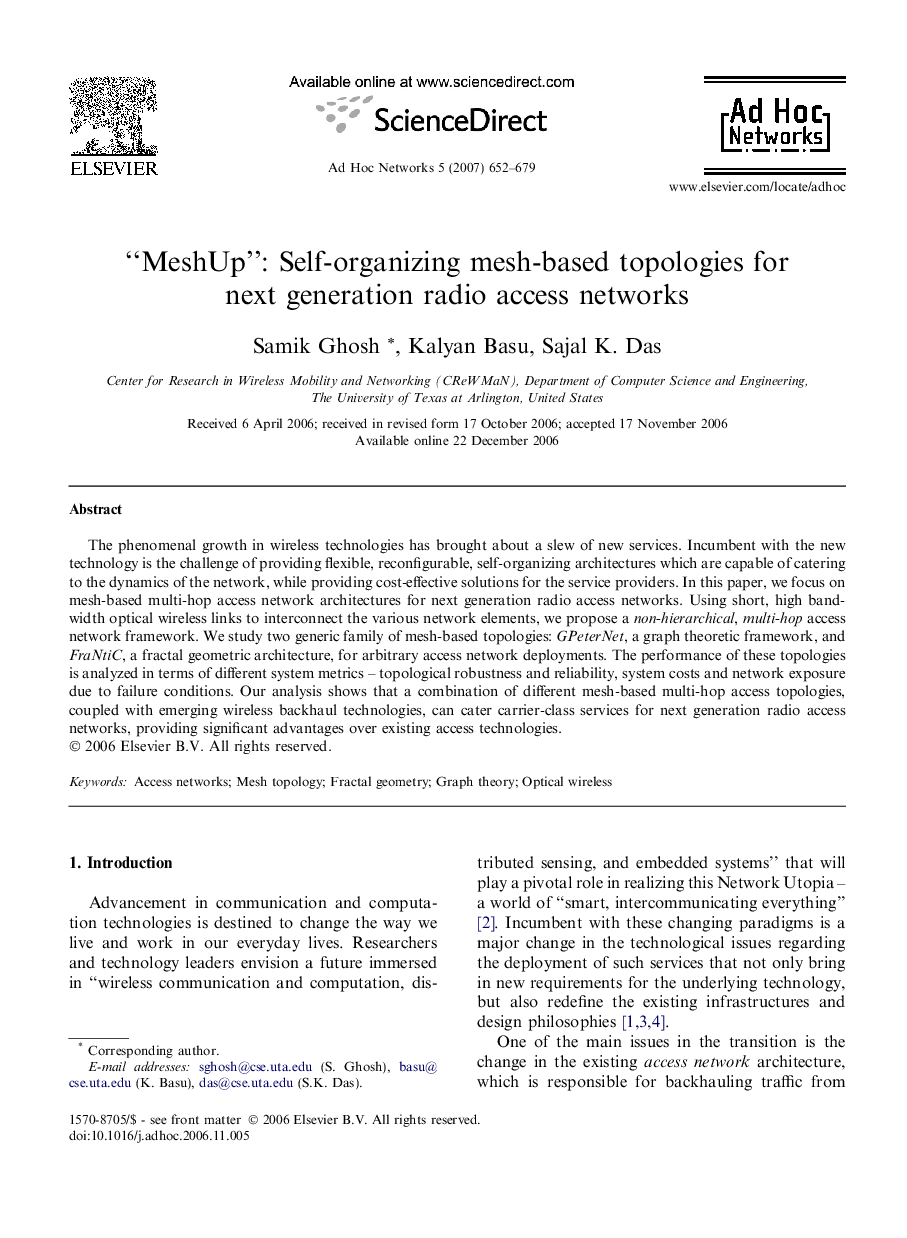| Article ID | Journal | Published Year | Pages | File Type |
|---|---|---|---|---|
| 448573 | Ad Hoc Networks | 2007 | 28 Pages |
The phenomenal growth in wireless technologies has brought about a slew of new services. Incumbent with the new technology is the challenge of providing flexible, reconfigurable, self-organizing architectures which are capable of catering to the dynamics of the network, while providing cost-effective solutions for the service providers. In this paper, we focus on mesh-based multi-hop access network architectures for next generation radio access networks. Using short, high bandwidth optical wireless links to interconnect the various network elements, we propose a non-hierarchical, multi-hop access network framework. We study two generic family of mesh-based topologies: GPeterNet, a graph theoretic framework, and FraNtiC, a fractal geometric architecture, for arbitrary access network deployments. The performance of these topologies is analyzed in terms of different system metrics – topological robustness and reliability, system costs and network exposure due to failure conditions. Our analysis shows that a combination of different mesh-based multi-hop access topologies, coupled with emerging wireless backhaul technologies, can cater carrier-class services for next generation radio access networks, providing significant advantages over existing access technologies.
